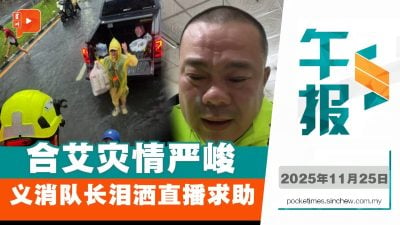
BANGKOK: The following are the 18 FAQs on Thailand’s southern Land Bridge project and its benefits:
1. Will gas separation and oil refinery plants be built?
Oil, gas or petroleum industries are not part of the project. Ships and other vessels will have to refuel and the concession winner will take charge of bunkering services by building oil storages for them.
2. What kind of industries will be available?
Industries that will benefit local people, such as those making products from rubber, oil palm, fruit, seafood, halal food and high-tech industry.
3. How much will be needed for the land bridge project and what is its length?
The land bridge will save shippers about five days compared to sailing through the Melaka Strait.
The project will require an investment of 1 trillion baht, and the funding will be done via a public partnership scheme.
4. How will oil slicks be prevented?
Guidelines will be set up and operation teams will be on hand to deal with oil slicks.
The relevant government will also coordinate and send immediate help when oil leaks take place.
5. What kinds of goods will be transported using the land bridge and where will they originate from?
Export and import goods from across the country, such as the Eastern Economic Corridor, can benefit from the Ranong and Chumphon deep-sea ports.
These include rubber products, oil palm, processed food, fruits and vegetables.
Halal food products, AI items and smart electronic products, which will be developed near the ports, will also benefit. Transit and transshipment products will also benefit.
6. Will the land bridge aggravate flooding?
The land bridge will be designed in line with the physical characteristics of the areas. For instance, roads will not be blocking waterways.
7. Will the daily life of local communities and fishermen be affected?
Fishermen can continue travelling on the original waterways unaffected as there will be bridges above the waterways, but areas around the ports will be off-limits to fishermen.
8. How will affected people be compensated?
A committee will be set up to determine affected people and calculate how much should be paid in compensation.
The committee will have representatives from the government, the project concessionaire and the public.
9. Why are different government agencies providing different information that is confusing people about the project?
The Office of Transport and Traffic Policy and Planning (OTTPP) will be in charge overall, from the development to the linking of ports.
The roads will be built by the Highways Department and the State Railway of Thailand (SRT) will be in charge of the double-track railway.
10. Has OTTPP conducted a sea environment assessment?
The sea environment assessment was conducted by OTTPP in 2016 for carrying out mega projects along the coasts in the South.
11. Will the project cause the spread of sea sediment, coastal erosion and change of tides?
Officials will carry out a study on the possibility of sea sediment spreading due to the ports’ construction.
The study will identify affected areas for drafting measures to mitigate the impact and to compensate local people.
12. Will locals be informed before a survey on land expropriation is conducted?
The SRT will inform people before it surveys areas for expropriation for building a double-track railway.
13. What are the criteria for land expropriation?
Land with title deeds will be expropriated under the Property Appropriation Act of 2019.
Prices will depend on various factors but will be above the state evaluation.
Land without deeds and plots in agricultural land reform areas will be appropriated through negotiations on the cost of farm products and the cost of relocation.
New farm plots will be provided to affected farmers.
14. What will be the criteria for compensation for affected trees?
The government will compensate farmers for trees felled based on prices and value in the list of 412 trees and 154 farm crops.
15. How will the government conduct a public awareness campaign?
Government officials will explain the project to local people via several activities, such as small group meetings.
16. How will national parks, mangroves and the coastal ecosystem be affected?
An environmental impact study on four issues – physical environment, biological environment, usefulness of the project and quality of life – will be conducted.
The compensation rate will be determined based on the environmental impact.
17. How will local water resources be protected from industries?
Surveys will be conducted on new water resources to plan how they can be shared without local people being affected by industries.
18. Will the project damage natural resources and local people’s way of life?
The project will be based on sustainable development principles, so it can live side by side with local communities without hurting the environment.
The concession winner will support the careers of local people via CSR programmes.
ADVERTISEMENT
ADVERTISEMENT








































